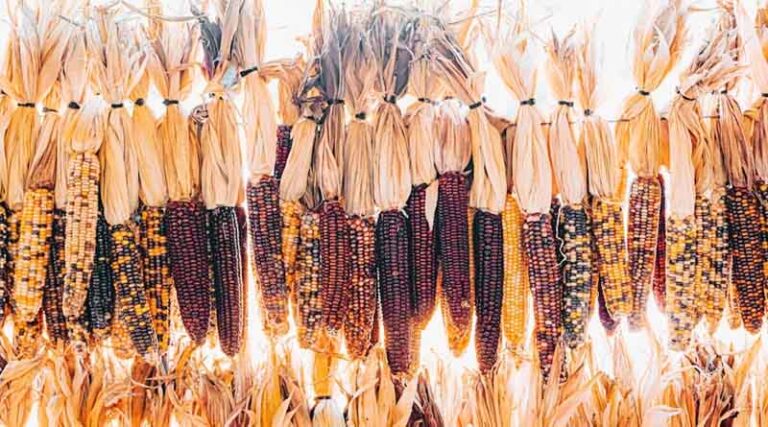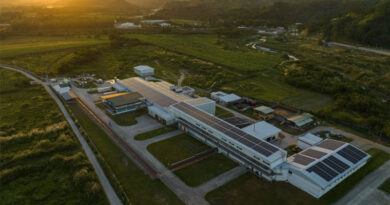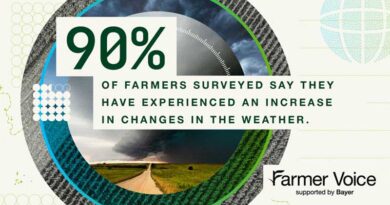
Mayan Farming: Ancient Wisdom Shaping the Future of Sustainable Agriculture
Rediscovering the Roots of Mayan Agriculture
07 October 2025, Guatemala: Long before modern agricultural systems and mechanized farming, the Maya civilization of Mesoamerica—spanning present-day Mexico, Guatemala, Belize, Honduras, and El Salvador—had mastered complex and sustainable farming techniques that fed millions of people for centuries. Archaeological evidence suggests that Mayan agriculture dates back as early as 2000 BCE, flourishing through sophisticated land-use systems that maximized productivity while maintaining ecological balance. Today, as the world faces challenges of soil degradation, biodiversity loss, and climate change, researchers are turning back to these ancient methods, recognizing their potential alignment with and even superiority to some modern sustainable and regenerative practices.
The Core Principles Behind Mayan Farming
At the heart of Mayan agriculture was the understanding that land is a living system. The Maya practiced what scientists today term “integrated landscape management,” using forests, wetlands, and hillsides in harmony rather than isolation. Their farming systems were not based on monoculture but on multi-cropping, soil restoration, and the cyclical use of organic matter. The primary goal was not extraction but renewal—ensuring that the soil and ecosystem remained fertile for generations to come.
The Milpa System: The Foundation of Mayan Agriculture
Perhaps the most celebrated of all Mayan agricultural systems is the Milpa, a rotational farming practice that involves the intercropping of maize (corn), beans, and squash—commonly known as the “Three Sisters.” This system, observed and documented since the Classic Maya period (circa 250–900 CE), provides a model of ecological balance and mutual benefit between plants.
Maize serves as the structural crop, providing a stalk for beans to climb. Beans fix atmospheric nitrogen into the soil, enhancing fertility naturally, while squash acts as a living mulch, reducing weed growth and preserving soil moisture. This synergy not only sustains soil health but also ensures a diversified harvest, reducing the risk of crop failure.
In some regions, the Milpa was extended with the inclusion of root crops like cassava, sweet potatoes, and taro, along with fruit-bearing trees such as avocado, cacao, papaya, and plantain. This combination created an agro-ecological mosaic that functioned much like a forest—rich in biodiversity and self-sustaining.
Beyond Milpa: Other Mayan Agricultural Innovations
While the Milpa system is widely known, the Maya employed various other advanced techniques depending on geography and water availability.
In the lowlands, where seasonal flooding was common, they constructed raised fields—known as bajos—using sediment and organic waste. These fields allowed for cultivation even in waterlogged conditions, maintaining fertility and preventing erosion. The raised beds were surrounded by canals that regulated water flow and provided habitat for fish and aquatic plants, creating a multifunctional agroecosystem.
In the highlands and hilly regions, the Maya engineered terraced farming systems, stabilizing slopes with stone walls and cultivating multiple layers of crops. This technique prevented soil erosion and optimized rainfall absorption, enabling productivity even on steep terrain.
In coastal and wetland areas, the Maya practiced chinampa-like systems—floating gardens that harnessed the nutrient-rich sediments of lakes and wetlands. These methods have been found to be strikingly similar to the later Aztec chinampas, leading researchers to believe that the Maya may have pioneered this concept.
The Crops That Sustained a Civilization
The Maya cultivated a vast range of crops, many of which remain staple foods today. Maize was the cornerstone of their diet and spiritual life, symbolizing creation and sustenance. Alongside maize, beans and squash formed the nutritional base, providing a balanced intake of carbohydrates, protein, and essential vitamins.
Other crops included amaranth, chili peppers, tomatoes, cacao, avocados, cotton, tobacco, cassava, and chia. Tree crops such as ramon (breadnut) and copal were also cultivated or semi-domesticated, serving dietary, medicinal, and ceremonial purposes. The diversity of species ensured resilience against pests, diseases, and climatic variability—a lesson modern monocultures have often failed to heed.
How Mayan Agriculture Evolved Over Time
The decline of major Maya cities between the 9th and 10th centuries CE did not mark the end of their agricultural practices. Many Mayan communities continued these traditions at smaller scales, blending them with colonial and later industrial influences.
In recent decades, renewed archaeological studies, remote sensing (LIDAR) mapping, and soil analyses have revealed vast remnants of ancient Mayan agricultural landscapes—demonstrating that their systems covered hundreds of thousands of hectares at their peak. This rediscovery has inspired modern scientists and agronomists to adapt Mayan techniques to address present-day sustainability challenges.
Contemporary adaptations, especially in Guatemala and southern Mexico, have integrated modern tools with traditional systems—using Mayan agroforestry models for carbon sequestration, watershed restoration, and biodiversity conservation. NGOs and research organizations are even promoting Milpa-inspired community farming as a strategy for climate-resilient livelihoods.
Modern Scientific Validation of Mayan Methods
Scientific studies of Mayan soils, especially in raised-field regions, have found that these systems enhanced organic carbon content, microbial diversity, and water retention capacity—essential elements of soil regeneration. Moreover, the use of polyculture reduced pest outbreaks and improved nutrient cycling without the need for synthetic fertilizers or pesticides.
Researchers at the Smithsonian Tropical Research Institute and other institutions have shown that these techniques outperform conventional monocultures in terms of long-term soil fertility and yield stability, particularly under climate stress. The Mayan agricultural model thus represents an early form of what we now recognize as ecological intensification—increasing output without degrading natural resources.
Who Can Benefit from Mayan Farming Today?
The lessons from Mayan agriculture are particularly relevant for smallholder farmers, tribal communities, and regions facing land degradation or erratic rainfall. The techniques are adaptable across tropical and subtropical zones, making them viable in parts of Latin America, Africa, South Asia, and Southeast Asia.
However, the scalability depends on land management and community participation. While large-scale mechanized adoption is challenging due to the diversity of crops and terrain-specific design, Mayan farming can be effectively scaled up to hundreds of hectares in cooperative or agroforestry-based models. In Latin America, agroecology projects using Mayan-inspired systems have already been implemented at regional scales, combining local knowledge with scientific management.
Mayan Farming and Regenerative Agriculture: Are They the Same?
While both Mayan farming and regenerative agriculture share the principle of restoring soil health and promoting biodiversity, there are nuanced differences. Regenerative agriculture is a modern framework derived from ecological science and soil restoration principles, often emphasizing carbon sequestration, cover cropping, and rotational grazing.
Mayan farming, on the other hand, is an indigenous ecological philosophy—a culturally embedded system that views agriculture as a spiritual and communal relationship with nature. Where regenerative agriculture seeks measurable environmental outcomes, Mayan farming seeks balance between human life and the natural world.
Yet, both converge on critical values: soil regeneration, biodiversity conservation, reduced dependence on chemical inputs, and resilience against climate extremes. In essence, Mayan agriculture can be seen as the precursor and inspiration for what we today call regenerative or agroecological farming.
The Global Relevance of Mayan Farming in the 21st Century
As global agriculture confronts soil exhaustion, climate-induced stress, and food security challenges, Mayan agricultural wisdom offers a viable blueprint for resilience. Its success lies in integrating ecological diversity with cultural continuity. By mimicking natural systems rather than dominating them, Mayan farming demonstrates that sustainability is not a new invention—it is an ancient, time-tested practice waiting to be rediscovered.
Modern agribusinesses can adopt these lessons through agroforestry planning, multi-cropping systems, and soil regeneration programs that echo Mayan principles. For farmers worldwide, this means lower input costs, higher long-term productivity, and greater environmental stability.
Ancient Knowledge for Modern Challenges
The Mayan agricultural legacy is not a relic of the past—it is a living testament to what is possible when human ingenuity aligns with ecological intelligence. From the Milpa fields of the Yucatán to modern sustainable farms around the world, the essence remains the same: healthy soils, diverse ecosystems, and communities nourished by balance rather than exploitation.
In rediscovering and reapplying Mayan farming systems, we are not merely honoring an ancient civilization; we are charting the course for the future of global agriculture—one rooted in respect for the Earth and resilience for generations to come.
Also Read: John Deere Introduces the Z370RS Electric ZTrak™ Mower Featuring EGO 56V ARC Lithium™ Batteries
📢 If You’re in Agriculture, Make Sure the Right People Hear Your Story.
From product launches to strategic announcements, Global Agriculture offers unmatched visibility across international agri-business markets. Connect with us at pr@global-agriculture.com to explore editorial and advertising opportunities that reach the right audience, worldwide.






